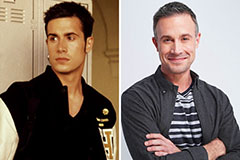Dive into the fascinating world of optical illusions and test your understanding of concave and convex mirrors. These two types of curved mirrors produce distinct visual effects, leading to exciting applications. A concave mirror, with its inward-curving surface, can enlarge objects, generating a larger image. Conversely, a convex mirror, with its outward-curving surface, always shows a diminished and imagined image.
Are you ready to conquer the mysteries of these mirrors? Let's embark on a visual journey filled with quiz questions.
- Question 1: Which type of mirror is used in makeup mirrors to provide a magnified view?
- Question 2: A convex mirror is often used as a security mirror because it provides a...
- Question 3: What happens when an object is placed very close to a concave mirror?
Twin World Enigma
The Multiverse holds many puzzles, but few are as intriguing as the concept of mirror images. What if the world had a perfect duplicate? This isn't just science imagination; it's a genuine engineering challenge.
Scientists have long been exploring the nature of mirroring, but what if the reflection isn't just a visual trick? Could there be a different realm where everything is the perfect opposite of our own?
- Imagine walking into a world where right is correct, and where gravity works in the inverse direction.
- ponder the moral ramifications of such a reality. Would your self remain the same?
The Mirror Image Magic: Physics Challenge forces us to rethink our understanding of the Universe and everything in it.
Exploring Image Formation with Mirrors
Mirrors display images through a fascinating process called reflection. When light rays from an object hit the smooth surface of a mirror, they alter according to the law of reflection. This rule states that the angle of incidence is equal to the angle of deviation. As a result, a virtual image is formed behind the mirror, appearing to be the same distance behind the mirror as the object is in front of it.
- The form of the mirror affects the type of image formed. Concave mirrors, with their curved inward surface, can produce magnified or reduced images, depending on the object's location.
- Convex mirrors, conversely, always produce diminutive and virtual images.
Understanding image formation with mirrors has wide-ranging applications in science. From simple makeup mirrors to complex astronomical telescopes, these devices rely on the principles of reflection to capture light and create clear images.
Test Your Knowledge: Concave and Convex Mirror Questions
Do you comprehend the peculiarities of concave and convex mirrors? Put your knowledge to the trial with these fascinating questions! Can you identify the image physics quiz creation in a concave mirror when an object is placed at various distances? Or perhaps you can explain how convex mirrors always produce apparent images that are diminished in size. Get ready to delve into the realm of reflection and see just how much you know about these intriguing optical instruments.
- What happens when an object is placed at the radius of curvature of a concave mirror?
- How does the shape of a convex mirror influence the image orientation?
Virtual and Real Images: The Mirror Equation in Action
The concept of a mirror's reflection is simple enough, but behind its apparent ease lies a fascinating interplay of light and geometry. Mirrors generate both apparent and genuine images, and the key to understanding this duality is the magnificent mirror equation. This equation provides a accurate relationship between object distance, image distance, and the form of the mirror itself. A concave mirror, with its inward curve, can produce both magnified virtual images for objects placed within its focal point, and real, inverted images when the object is beyond that point. Conversely, a convex mirror always forms smaller virtual images that appear upright and farther away than they actually are.
The mirror equation acts as a tool to quantify these occurrences, allowing us to calculate the position and characteristics of both types of images. Understanding this equation unlocks a deeper insight into how mirrors work, revealing the intricate dance between light rays and the geometry of reflection.
- Imagine an object placed close to a concave mirror: the resulting image will be virtual, upright, and magnified.
- On the other hand, move the object beyond the focal point of the concave mirror, and a real, inverted, and magnified image will emerge.
- Convex mirrors always produce reduced virtual images that appear farther away than they actually are.
Reflections, Refractions, and You: A Mirror Physics Quiz
Are you ready to discover the fascinating world of light and how it interacts with objects? In this interactive quiz, we'll delve into the concepts of refractions, shedding illumination on these fundamental physics principles. Get ready to test your knowledge and see just how much you know about mirrors!
Prepare to be examined with a series of intriguing questions that will make you think critically. From the basic laws of reflection to the bending of light as it passes through different mediums, this quiz explores a wide range of topics related to mirrors and their amazing abilities.
Don't worry if you feel a little unfamiliar about these concepts. The quiz is designed to be interactive and informative, so even beginners can participate. So gather your thinking cap and let's get started!
- What happens when light hits a mirror?
- How does the angle of incidence relate to the angle of reflection?
- Can you describe what refraction is and how it works?
 Angus T. Jones Then & Now!
Angus T. Jones Then & Now! Bradley Pierce Then & Now!
Bradley Pierce Then & Now! Joseph Mazzello Then & Now!
Joseph Mazzello Then & Now! Freddie Prinze Jr. Then & Now!
Freddie Prinze Jr. Then & Now! Nadia Bjorlin Then & Now!
Nadia Bjorlin Then & Now!